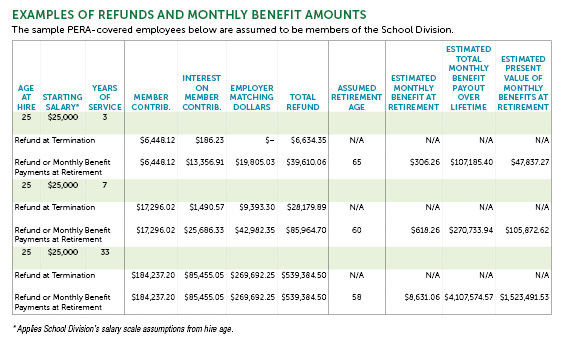PERA is classified as a “hybrid” defined benefit plan which means it has characteristics of a traditional pension plan as well as some additional features that are more commonly associated with defined contribution plans, such as 401(k) plans. One of the least understood elements of the hybrid plan is PERA’s Money Purchase Benefit option – (C.R.S. § 24-51-605.5).
The Money Purchase Benefit is available to every member of PERA but generally is applied to members who work less than a full career with a PERA employer. Here is how it works:
- Every dollar contributed by a member (8 percent of every check, 10 percent for State Troopers) is placed in an account of the individual participant.
- The contributions are credited with interest at a set annual rate that cannot exceed 5 percent by law (currently 3 percent).
- So long as a member has left their member account with PERA (i.e. does not refund and take out their money) until they have reached the age of retirement eligibility, they are eligible to receive the Money Purchase Benefit.
- The Money Purchase Benefit amount is calculated by taking the member account balance (contributions plus interest), adding a 100 percent match to that balance, and calculating the monthly amount that can be paid out for life assuming a 7.25 percent (currently) earnings expectation.
The following table shows the how the PERA plan design works for a PERA member who begins work at age 25 and then works three different career lengths. As indicated below, whether the member chooses to refund their account when they leave public service or leave their contributions in the plan until retirement eligibility, the member always receives more in benefits than the accumulated member contributions.
Defined benefitAlso known as a pension, this is a type of pooled retirement plan in which the plan promises to pay a lifetime benefit to the employee at retirement. The plan manages investments on behalf of members, and the retirement benefit is based on factors such as age at retirement, years of employment and salary history.Defined contributionA type of individual retirement plan in which an employee saves a portion of each paycheck (along with a potential employer match) and invests that money. The employee’s retirement benefit is based on their account balance at retirement. A 401(k) is a type of defined contribution plan.





